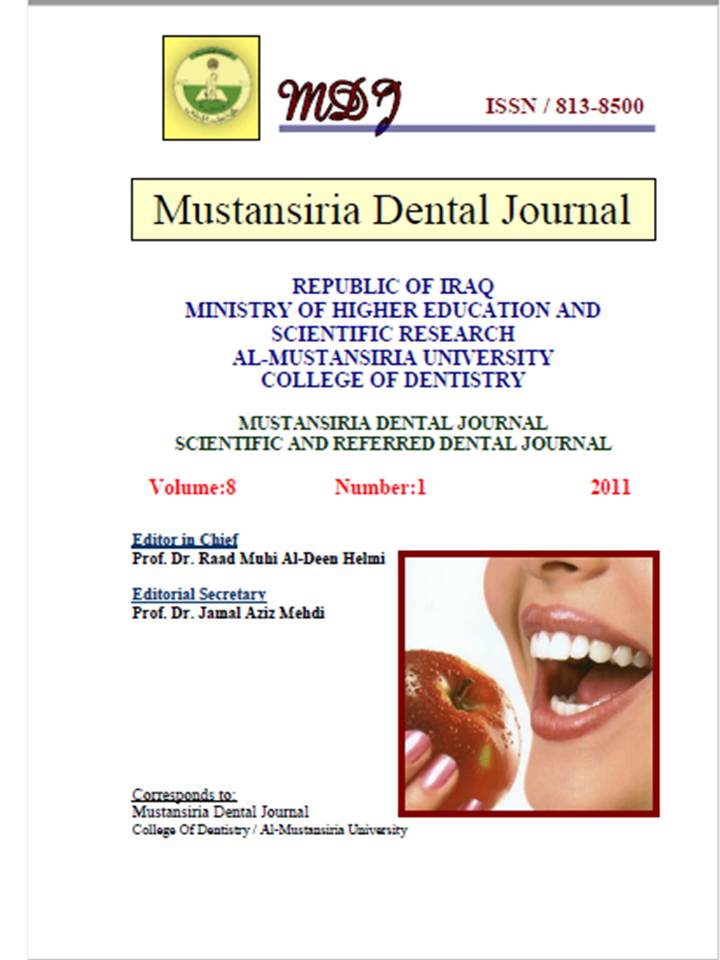Sclerotic ostitis in jaw bones in Iraqis (A radiographic study)
DOI:
https://doi.org/10.32828/mdj.v8i1.287Keywords:
Key words: Frequency, idiopathic osteosclerosis, condensing ostitis, Dental panoramicAbstract
The objective of this study was to investigate the frequencies of sclerotic ostitis in
jaw bones in Iraqi patient population with respect to age and gender, in addition to
shape, localization, and the dental relationship of lesions.
A retrospective study was performed using a conventional panoramic radiographs
of 867 patients ranging in age from 15 to 60 years subjected to dental treatment.
Descriptive characteristics of radiopacities (Idiopathic osteosclerosis IO, and
Condensing ostitis CO) including shape, location, and its dental relationship were
recorded.
There were 40 radiopacities detected, 27 IO lesions in 24 subjects (3.1 %) (15
females, 9males), and 13 CO lesions in 11 subjects (1.2 %) (9 females, 4 males). Both
IO and CO lesions were found to be higher in number among females when compared
to males. The frequency of IO lesions was found to be significantly higher in the age
group (31-45 years) than in other groups. On the other hand, the frequency of CO
lesions was higher in both age groups (31-45) and (46-60), and its frequency in these
periods was statistically higher than in the (15-30).
Our results point to the low IO and CO frequency among the Iraqi population. In
addition, our findings support the theory that IO lesions are developmental variations
of normal bone architecture unrelated to a local stimulant and CO lesions could be
considered reactive formations related to teeth with severe caries,restoration, or
pulpitis.

Downloads
Published
Issue
Section
License
The Journal of Mustansiria Dental Journal is an open-access journal that all contents are free of charge. Articles of this journal are licensed under the terms of the Creative Commons Attribution International Public License CC-BY 4.0 (https://creativecommons.org/licenses/by/4.0/legalcode) that licensees are unrestrictly allowed to search, download, share, distribute, print, or link to the full texts of the articles, crawl them for indexing and reproduce any medium of the articles provided that they give the author(s) proper credits (citation). The journal allows the author(s) to retain the copyright of their published article.
Creative Commons-Attribution (BY)








